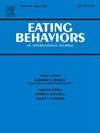在加拿大和美国的男孩和男人的在线样本饮食失调
IF 2.4
3区 医学
Q2 PSYCHIATRY
引用次数: 0
摘要
仍然需要确定饮食失调的患病率和社会人口学相关性,特别是在研究不足的男孩和男性群体中,以便为预防和干预工作提供信息。2024年,研究人员分析了来自加拿大和美国1553名年龄在15至35岁之间的男孩和男人的数据。可能的饮食失调诊断是使用先前建立的基于当前诊断标准的算法确定的。采用多变量logistic回归分析来确定满足任何可能的饮食失调诊断标准的社会人口学相关性。符合任何可能的饮食失调诊断标准的患病率为21.3%(95%可信区间[CI] 18.7-24.1),而符合可能的神经性贪食诊断标准的患病率最高(5.8%,95% CI 4.6-7.1),神经性厌食症的患病率最低(0.34%,95% CI 0.1-0.8)。男同性恋者(调整比值比[AOR] 2.28, 95% CI 1.35-3.85)或双性恋者(AOR 2.22, 95% CI 1.23-3.99)与非调整比值比者相比,符合任何可能的饮食失调诊断标准的几率更高。最后,身体质量指数(BMI)较高的男孩和男性(AOR 1.18, 95% CI 1.14-1.23)符合任何可能的饮食失调诊断标准的几率更大。研究结果进一步加深了人们对男孩和男性饮食失调的了解。针对性少数男孩和男性,以及那些bmi较高的人,需要有针对性和量身定制的预防和干预规划。本文章由计算机程序翻译,如有差异,请以英文原文为准。
Eating disorders among an online sample of Canadian and American boys and men
There is a continued need to identify the prevalence and sociodemographic correlates of eating disorders, particularly among the under-researched group of boys and men, to inform prevention and intervention efforts. Data from The Study of Boys and Men, a sample of 1553 boys and men aged between 15 and 35 years in Canada and the United States, were analyzed in 2024. Probable eating disorder diagnoses were identified using a previously established algorithm based on current diagnostic criteria. A multivariable logistic regression analysis was used to determine the sociodemographic correlates of meeting the criteria for any probable eating disorder diagnosis. The prevalence of meeting the criteria for any probable eating disorder diagnosis was 21.3 % (95 % confidence interval [CI] 18.7–24.1), while meeting criteria for a probable bulimia nervosa diagnosis had the highest prevalence (5.8 %, 95 % CI 4.6–7.1) and anorexia nervosa had the lowest prevalence (0.34 %, 95 % CI 0.1–0.8). Boys and men who identified as gay (adjusted odds ratio [AOR] 2.28, 95 % CI 1.35–3.85) or bisexual (AOR 2.22, 95 % CI 1.23–3.99) had higher odds of meeting criteria for any probable eating disorder diagnosis, compared to those who did not. Finally, boys and men who had a higher body mass index (BMI) (AOR 1.18, 95 % CI 1.14–1.23) had greater odds of meeting criteria for any probable eating disorder diagnosis. Findings add to the growing understanding of eating disorders among boys and men. Targeted and tailored prevention and intervention programming is needed for sexual minority boys and men, and those with higher BMIs.
求助全文
通过发布文献求助,成功后即可免费获取论文全文。
去求助
来源期刊

Eating behaviors
Multiple-
CiteScore
4.20
自引率
3.60%
发文量
65
审稿时长
60 days
期刊介绍:
Eating Behaviors is an international peer-reviewed scientific journal publishing human research on the etiology, prevention, and treatment of obesity, binge eating, and eating disorders in adults and children. Studies related to the promotion of healthy eating patterns to treat or prevent medical conditions (e.g., hypertension, diabetes mellitus, cancer) are also acceptable. Two types of manuscripts are encouraged: (1) Descriptive studies establishing functional relationships between eating behaviors and social, cognitive, environmental, attitudinal, emotional or biochemical factors; (2) Clinical outcome research evaluating the efficacy of prevention or treatment protocols.
 求助内容:
求助内容: 应助结果提醒方式:
应助结果提醒方式:


